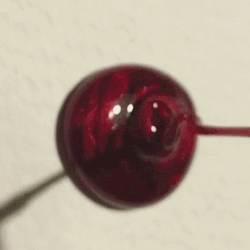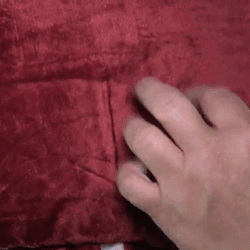#SLI
Text

After a long time, I returned with new art) The art is drawn with great love for Severus Snape
195 notes
·
View notes
Text
Gavin: Stab me again, I'm close.
8 notes
·
View notes
Text

Frederick Stuckwisch
11 notes
·
View notes
Text
I POSTED A NEW FIC, GO CHECK IT OUT
rating: G / slimeriana / strangers to lovers
basically, mariana is a single parent, charlie falls in love and flippa takes a big liking in charlie
8 notes
·
View notes
Text
Socionics Quadras — Delta
Delta, or the ‘fourth’ quadra, includes LSE, EII, IEE, and SLI.
Reinin caracterises this quadra as Judicious, Serious, and Aristocratic.
Dominant elements
The dominant IM elements of the Delta Quadra are Te, Fi, Ne, Si. Grouping together the elements of the Ego blocks of the Delta Quadra types, we get a picture of what aspects of life Delta Quadra types strive to bring to the forefront of life, as well as the kind of group atmosphere and lifestyle they pursue.
Te blocked with Si
Delta types make a point of talking about the rationale behind their actions and emphasizing the productiveness or unproductiveness of different ways of doing things - even in such emotional areas as personal relationships.
Delta types value peaceful, refreshing activities where they are doing something useful and balancing out their inner world at the same time.
Delta types have the philosophy that they will have to rely on their own industriousness to achieve their goals rather than on luck, speculation, group effort, or strong leadership.
Ne blocked with Fi
Delta types love to share personal experience mixed with their own sentiments regarding their experiences, but all in an insightful and non-dramatic manner.
Delta types like to talk about new beginnings, opportunities for personal growth, and their plans and prospects for the future.
Subdued elements
The subdued IM elements of the Delta Quadra are Fe, Ti, Se, Ni. Grouping together the elements of the Super-Ego blocks of the Delta Quadra types, we get a picture of what aspects of life Delta types strive to keep hidden, avoid, not focus attention on, and keep at the periphery of their lives.
Fe blocked with Ni
Delta types rarely display their deep passions and vision, preferring instead to talk in more neutral terms about what they want to do and why.
Delta types reject dramatism and emotional affect in favor of wry humor and understatement.
Delta types don’t tend to form or maintain groups based on fun, emotional interaction, but only take groups seriously that perform some common productive or restful activity.
Delta types generally dislike using poetic wording when describing their inner state, but talk simply about what they feel or their bodily sensations.
Se blocked with Ti
Delta types do not fare well in high-pressure situations where they are being forced to do things, are facing threatening opponents, or are submitted to rigorous discipline, but wear out quickly and look for a more peaceful and welcoming environment.
Group behavior
Groups made up of primarily Delta types tend to be focused on working on projects, enjoying physical recreation, or finding out interesting things about each other. Laughter is usually subdued and brief; instead, people smile a lot and try to be witty and welcoming. Groups need to be focused on some specific productive activity or topic of discussion, or else they fall apart. In Delta groups, there is a lot of splintering and decentralization. This allows for more focused and productive interaction with only those who share your particular interests or sentiments. People jump from small group to small group easily to keep up their interest level. No one demands that the entire group listen to one person or that everyone do the same thing. Delta Quadra types believe that if everyone just pursues their own interests and makes some accommodations for others, the group will be better off anyway. Delta Quadra types do not focusing on building group identity or unity of purpose, but prefer for the group to remain splintered and decentralized.
Romance styles
Delta romantic relationships usually begin simply as the encounter of two individuals interested in a relationship and each other in a particular moment, with very little in terms of outward demonstrations of “romance” in the “wooing” sense of the term or in strong external demonstrations of emotions. Deltas are more focused on the present moment than Gammas, and therefore even relationships of very strong attachment do not lead to constant concerns as to their longer-term practical feasibility. Deltas see as optimal romantic relationships those where partners spend time together on fun activities and sharing ideas of potential practical application. Romantic atmospheres are low-key, based on comfort but practicality.
Perception of other quadras
Alpha
Deltas tend to see Alpha types as fun company and interesting people to discuss ideas and prospects with, but naive and inconsistent in their personal and business relationships. Alpha types seem to lack the common sense to turn their fun and creative energy into something productive and often seem overly idealistic.
Beta
Deltas tend to see Beta types as people who “dream big” and always want to turn things into grandiose endeavors, yet can’t manage day-to-day affairs effectively. Also, Beta types seem unwilling to consider things from the point of view of others, which gives them a streak of meanness and cruelty.
Gamma
Deltas tend to see Gamma types as driven and reliable in personal and business relationships, but not sufficiently understanding of people who want to pursue their own individual path in life. Gamma types sometimes become too demanding and can have a streak of vindictiveness or spitefulness which prevents them from being accepting and forgiving.
Source: Wikisocion
#personality theory#personality types#typology#socionics#sociotypes#iee#lse#eii#sli#enfp#estj#infp#istj
25 notes
·
View notes
Text




The Last Teleport - Part 19
Masterpost
Previous || Next
The shortest part there is! But there are important some moments worth mentioning.
#slime rancher#the last teleport#slime rancher 2#slime rancher fanart#art#slimerancher fanart#slimerancher#digital comic#fan comic#my art#sli#slime
42 notes
·
View notes
Text
Anecdotal experiences with fellow socio-types (socionics):

SLIs
High affinity for food—especially junk, comfort and discretionary foods. This is a common observation with these dudes—If I had to throw a dart to the types that contribute most to obesity rates, it would be SLIs.
These individuals mostly opt for neutral, casual attire—I've rarely seen any SLIs in person wear flashy, colourful or bright clothing.
On the surface, usually seems dry, socially awkward and reserved, but tends to be soft, vulnerable and goofy if they cosy up to you (3E is a common psychosophy placement for these guys).
Able to let loose with close acquaintances but can be fucking lazy, unpunctual and sedentary. Conversely though, these guys possess amazing will-power when necessary.
The guys I know with this sociotype are all into gaming to some degree and enjoy kinaesthetic activities, like building/manipulation of tangible objects (e.g lego, crafting, fixing objects).
also tend to be attached to classic childhood shows and cartoons
aptitude for/usually likes vehicles.
Commonly opts for technical/mechanical careers and STEM subjects. Enjoys sports and practical activities.
ESI
Extremely pedantic, 'us-against-them' mentality, very critical of behaviour, diligent and organised, conservative and perfectionist, soft to the select few and very uncompromising to the rest
Appreciates hardworking, responsible and productive individuals
Very gamma Fi-Se valuing; avoidant of adversaries and poor relationships.
poorly tolerates chaos and hates immaturity, vulgar and irresponsible individuals
Exceptionally loyal and devoted to the few that they consider close and doesn't allow new acquaintances in easily
This is the type that silently judges you
usually neurotic and possesses a polarizing, black & white framework
slow to forgive—if at all. They are cautious and highly selective.
#socionics#typology#sociotypes#ESI#socionics functions#socionic quadras#SLI#Si base#Fi base#gamma quadra#delta quadra#information elements#cognitive functions
5 notes
·
View notes
Text
are lsi's most exact type?
if you think about it, all or almost all te established methods/recipes were once ti theories. or basically, when ti theories are proven, they become te standards. te obvious truths. te practical and pragmatic business logic.
lsi is a ti dom. so they will generate a lot of ti theories and fail. ti fails all the time, but only through failing you can come up with more practical or efficient systems. basically, lsi will experiment, sli won't. sli doesn't take risks, lsi do.
let's see, sli has: si,te,fi,ne... the fk sli gonna do with that weak ass inferior ne? nothing. ne and se are the real experimental functions when it comes to perceiving. lsi with the creative se therefore superior to sli's ne on every possible way.
lsi with se creative will move and shake things. just because they run their experiments calculatedly (se tangibles) doesn't make them ocd or scheduling. they are definitely closer to probing.
*probing / scheduling is keirsey's p/j dichotomy
3 notes
·
View notes
Text
almandine garnet stimboard









#Almandine#almandite#garnet#Almandine garnet#((bull’s stims))#Gemstones#gem#crystal#shiny#stim#sli#e#slkme#Dlime#slime#moth#velvet
2 notes
·
View notes
Text

youtube
#slimevideo#ASMR #toysforkids #KiddzySlimeVs#satisfying#kidsvideo #slimeslime #slimevideoforkids
#slime videos#slime#how to make slime#slime storytime tiktok#slime reviews#cool slime videos#sli#slimelife shawty#satisfying video#satisfying#Oddly satisfying#Slime#Mixing all my slime#slime mixing#Mixing all my slime smoothie#ASMR#DIY#no music#Glossy Slime#Making Slime#Making Glossy Slime#relaxing#make slime#mix slime#KiddzySlimeVs#kidsvideo#slimevideoforkids#videofortoy#jellyvideo#asmrvideo
3 notes
·
View notes
Text
https://www.bandlab.com/djerror808/nina2-p-sli-milli2k3-d829ae2f?revId=e19f337d-4046-ed11-b495-000d3a3ee153
#remembered 2018💞😳💞#pluggnb#sexxnb#plugg#pluggnb_beat#plugnb#sexy_beat#djerrorxo#goyxrd#goyxrdtypebeat#autumn#summrxo#nina#xangang#benjicold#autumn!#sli#milli2k3#liltecca
2 notes
·
View notes
Text
Dive into the intricacies of Service Level Agreements (SLAs), Service Level Objectives (SLOs), and Service Level Indicators (SLIs). Explore how Application Performance Monitoring (APM) tools can optimize your services through real-world use cases, ensuring high performance and reliability. Read now-https://xuzpost.com/sla-slo-sli-apm-use-cases/
0 notes
Text


elise. my sli-te sp/sx 9w1 954 flev phleg-mel babygirl.
#SLI#sp9#sp/sx#954#enneagram#typology#mbti#istj#istp#flev#phlegmatic-melancholic#marlboro reds#my art#original character#character design#goth girl#alt girl#summertime#summer
1 note
·
View note
Text
SLA vs SLO vs SLI

Today I learned that the SLA is what your client asks but that the SLO is what you deliver!
sauce for the image: https://www.atlassian.com/incident-management/kpis/sla-vs-slo-vs-sli
0 notes
Text
Navigating the Triad of Service Agreements: Demystifying SLOs and SLIs in the Realm of SLAs.
0 notes
Text
Functions in Socionics — Introverted Sensing
Introverted Sensing according to Aushra Augustinavichiute
We view an object’s internal state as a relation between events that condition each other. Through this element one perceives information about the way processes affect the internal state – one’s feelings and sense of wellbeing that this interdependence causes.
Interaction in space is nothing more than a reflection of one object in another. Objects reflect each other and evoke certain feelings in one another. An individual perceives direct outside information as feelings evoked by things happening around them. For example, a feeling of pain is nothing more than the brain’s reflection of a relation between one’s body and a process taking place in some part of the body and interfering with its functioning.
When this aspect of perception is in the leading position, the individual is able to change the properties of the environment and the way people in this environment feel. They know how to avoid physical discomfort and how to protect others from it, which is determined by an ability to recreate once experienced aesthetic feelings. An excellent example of this is Peter Paul Rubens, who did not paint from life, but rather from his own memory of once experienced aesthetic feelings. When he was making a painting, he sought to give the viewer a specific aesthetic experience by recreating it. Such art is a revival of the object that provides the viewer with aesthetic feelings intended by the creator. Likewise, when an individual with this type of IM is cooking, they start by imagining how the dish will taste. Such people can distinguish once experienced aesthetic feelings from new ones, and know how to collect and remember them. This is probably why there are a lot of people with this type of perception among the so-called “psychic diagnosticians.”
An individual with this type of IM is able to set their sensory aesthetic needs in opposition to the same needs of others. They know how to fight for the fulfilment of said needs, and can shape and refine their own and other people’s aesthetic tastes and habits. They have an ability to impose their understanding of aesthetics and comfortable life on others.
Introverted Sensing according to WSS
Aspect: Physical flow. Physical objects bear a relation to each other in terms of occupying a physical environment. This environment is where things happen, flowing from one state to another in the present moment. The flow is best in quality when smooth and allowed to happen naturally, removing blockages and sudden interruptions that feel painful or grind the gears. Similarly, people can acclimate themselves to the flow, existing in harmony with themselves and their surroundings.
Metabolism: The individual attunes themselves to the flow of events in the present moment, feeling the surroundings in detail with their five senses and helping to maintain its smooth, organic and healthy quality. Anything painful or unpleasant that causes stress or damage to the flow is brushed away, with the intention that things are allowed to happen in the way that is most natural and feels good for them. In this way, the present flow is refined in its feel and quality, creating relaxing, immersed experience of the day-to-day.
Strength: The person is good at noticing and recognising small changes and alterations to the flow of physical experience, being able to pick out each detail contributing to and hindering it, while understanding what needs to go to restore quality. They know from looking at things in the moment, that they are all right and good, not needing any intervention, and that they can simply relax, allowing things to continue. Consequently, the person knows how to savour and enjoy their experiences, without doing anything.
Value: The person desires flow in their present experience, trying to keep the sensations that feel best for them. They want things to be pleasant and non-abrasive, for people to be allowed to do what they will and for past wrongs to be forgiven if no longer causing pain, and for their actions to be in peace and harmony with the life around them. The person tries not to disrupt things that are happening naturally, preferring to go with the flow and enjoy what happens. Similarly, they may withdraw from environments where they feel there is too much disruption to the flow.
Introverted Sensing according to SHS
Tastes, colours, smells, touches; conformity, adaptation; enjoying the moment; skin and mucous membranes.
Intellectually: Intellectual activity in the S-state is the processing of signals coming from all senses. In the S-state, a person absorbs information from the outside world–sounds, smells, touches, temperature–and compares them with each other as a unified sensory complex. The difference from the F-state is that the emphasis is on the dynamics of sensations–on whether they are amplified or weakened, harmoniously combined or arise at random. In the S-state, a person does not think in terms of words or pictures, but through their whole bodies.
Socially: Stable expression of S leads to an informal role that is called a task finisher, or a decorator. Such a person shows themselves well when the external environment, perceived through the senses, is in a harmonious state. The S-type avoids activities that are accompanied by discomfort, noise, coercion, and prolonged exertion. Therefore, the task finisher is active in an isolated environment of the society. Although their activity is limited, it is universal and quite diverse–monotony and repetition are disagreeable with the S-state.
Psychologically: The S-state is experienced as pleasure, enjoyment, feeling sated, satisfying one’s thirst and hunger. In the S-state, a person expresses their feelings through giving care, an assistance to satisfy biological needs. This process can be compared to capturing an image on a photographic film, drawing a picture on a piece of paper, recording sounds on a magnetic tape, etc. The S-state can easily diagnose a condition: it allows you to determine the location of pain in the body and its intensity. The S-state is cyclical in nature–filling out and emptying of hollow organs and vessels with a circulating substrate.
Physically: The S-state is recognized by a soft and relaxed body, a comfortable position in which body skin is in maximum contact with a supporting surface. In the S-state, uniform physiological processes in the body become quite noticeable–respiration, blood circulation, radiation of heat. Gestures are sparse and precise, but smooth and without tension. Facial expressions are associated with engagement of the taste muscles located around the mouth and nose. Satisfaction or displeasure, pleasure or disgust are painted on the face.
Source: PDB Wiki
8 notes
·
View notes